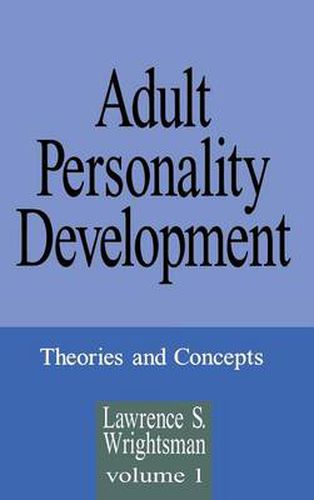Readings Newsletter
Become a Readings Member to make your shopping experience even easier.
Sign in or sign up for free!
You’re not far away from qualifying for FREE standard shipping within Australia
You’ve qualified for FREE standard shipping within Australia
The cart is loading…






Why do we, as adults, have the personality characteristics we do? No one explanation is accepted by all; however, in this greatly expanded version of his earlier book, Personality Development in Adulthood, Wrightsman helps us understand and organize the three broad theoretical approaches to explain psychological changes during the period from adolescence to the onset of late adulthood. Each of these approaches–early formation theories, stage theories, and the dialectical approach–are described and contrasted in order to help us more easily compare our experiences with those of others. Case histories, relevant current events, and boxed inserts are used throughout the book to illustrate important concepts in a thought-provoking, lively manner. Written in a compelling, non-technical style, the book is accessible to students and interested readers from all disciplines, especially psychology, clinical and developmental psychology, aging, family studies, sociology, gender studies and nursing.
$9.00 standard shipping within Australia
FREE standard shipping within Australia for orders over $100.00
Express & International shipping calculated at checkout
Why do we, as adults, have the personality characteristics we do? No one explanation is accepted by all; however, in this greatly expanded version of his earlier book, Personality Development in Adulthood, Wrightsman helps us understand and organize the three broad theoretical approaches to explain psychological changes during the period from adolescence to the onset of late adulthood. Each of these approaches–early formation theories, stage theories, and the dialectical approach–are described and contrasted in order to help us more easily compare our experiences with those of others. Case histories, relevant current events, and boxed inserts are used throughout the book to illustrate important concepts in a thought-provoking, lively manner. Written in a compelling, non-technical style, the book is accessible to students and interested readers from all disciplines, especially psychology, clinical and developmental psychology, aging, family studies, sociology, gender studies and nursing.